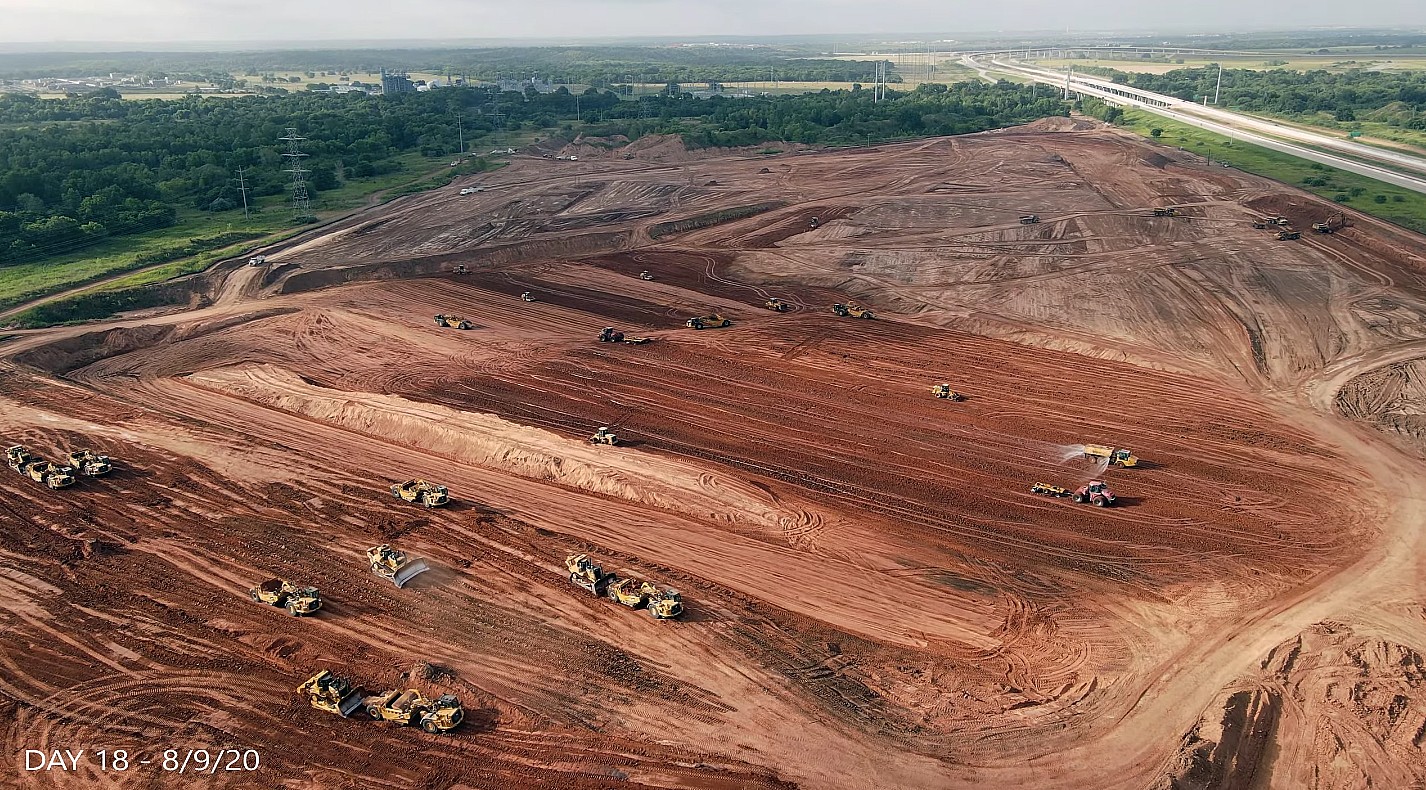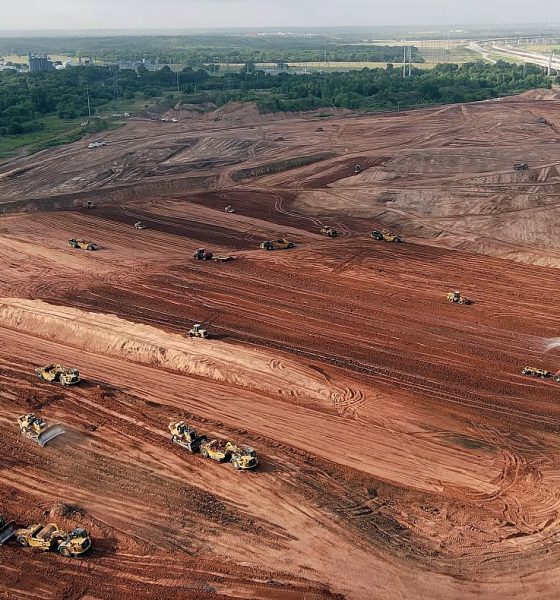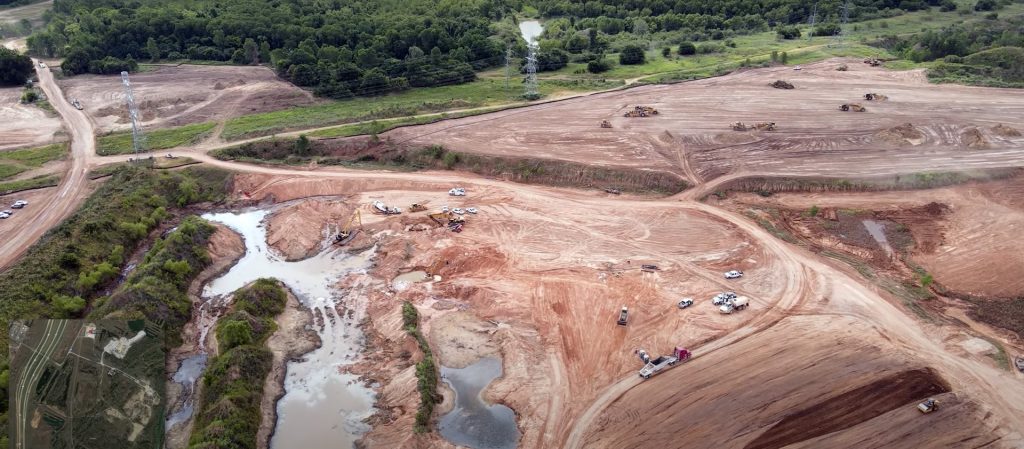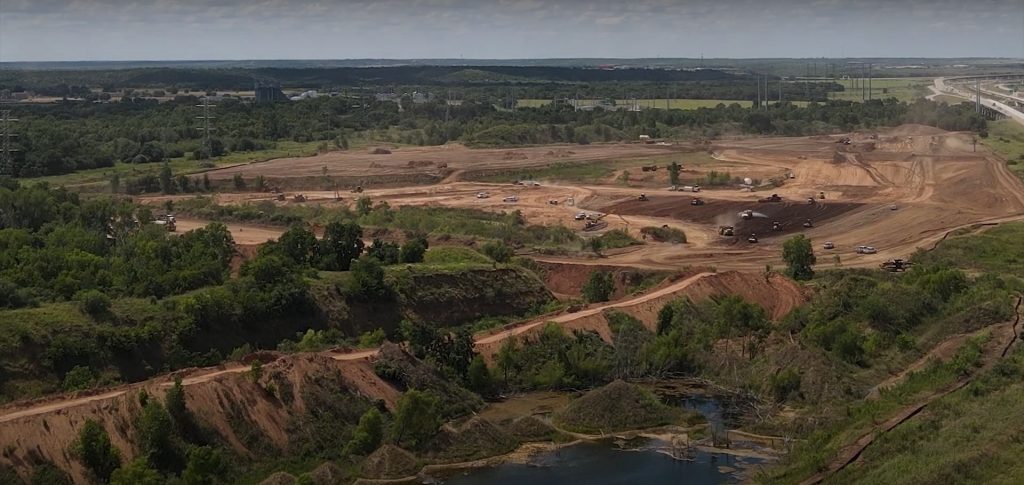

News
The ‘Tesla Effect’ hits Texas as Giga Austin starts transforming Travis County
For decades, the Del Valle area, an underdeveloped section of southeastern Travis County, saw minimal commercial investment. The area was poised for growth, but the arrival of companies that would provide work for the area’s residents was very deliberate. That is, at least, until Tesla announced that it will be building its Gigafactory Texas facility in the area.
Tesla is investing at least $1 billion in its new factory, and it intends to employ 5,000 workers in manufacturing jobs. It did not take long before the expansive 2,000-acre lot — which Elon Musk has stated will be developed into an “ecological paradise” — turned into a sign of growth and progress for Del Valle. With work at the site now “moving at the speed of Elon” as per a developer, Giga Texas could very well become the trigger for change in the oft-neglected section of Travis County.
In a statement to the Austin American-Statesman, Travis County Commissioner Jeff Travillion noted that the Del Valle area has been ready for a transformation for some time now. Del Valle’s residents are nearly twice as likely to be African-American compared to Travis County as a whole, and its concentration of Latino families is also above average for the US. This unfortunately meant that household incomes in the area lag in comparison to other areas of the county.

Within the Del Valle Independent School District’s boundaries alone, the average median income stands at just $20,000 per year, less than Travis County at large. This could change with Tesla’s arrival. “I hope we can build sustainability while we are building the economic infrastructure for that area. I’m optimistic. It can lead this community to a thriving future, but we cannot forget our most vulnerable populations,” he said.
Executives from the electric car maker have noted that about 65% of the estimated 5,000 jobs it will be offering will involve unskilled labor that does not require a college degree. The company has further noted that the average annual salary for workers at the plant will be $47,147, while the median salary would be $68,303. With this, Giga Texas would likely become an attractive place of work for many of the county’s residents.
The “Tesla Effect” that’s expanding into Del Valle will not only be felt by the area’s job market. With the company’s vertical integration, Gigafactory Texas could herald the arrival of other companies that are partnered with the electric car maker as well. Such a thing happened in 2003 in San Antonio, Texas, when Toyota decided to build its trucks in the city. Toyota opted to have tier-one suppliers onsite, which, in turn, resulted in suppliers establishing their own presence in San Antonio. About 4,000 more jobs were brought about by this strategy.

The Del Valle school system stands to benefit from Gigafactory Texas as well. In a statement, Del Valle school board president Rebecca Birch stated that having a major Tesla facility around could open up numerous opportunities for students. Giga Texas, for example, could create a large number of internships and mentorship programs that students could take advantage of.
“We’re excited about the opportunity and can’t wait to see what this means for our kids. We made sure that we put students first and we hope this means everything we dream it will,” she said.
Gigafactory Texas will likely be Tesla’s most impressive facility yet. With such an expansive area, the electric car maker could expand its operations significantly, perhaps even pursuing some of its own battery production efforts. It also stands to be the first of Tesla’s facilities that would actually be partially open to the public, with sections such as a boardwalk and a hiking/biking trail being accessible for everyone.

News
Tesla starts showing how FSD will change lives in Europe
Local officials tested the system on narrow country roads and were impressed by FSD’s smooth, human-like driving, with some calling the service a game-changer for everyday life in areas that are far from urban centers.

Tesla has launched Europe’s first public shuttle service using Full Self-Driving (Supervised) in the rural Eifelkreis Bitburg-Prüm region of Germany, demonstrating how the technology can restore independence and mobility for people who struggle with limited transport options.
Local officials tested the system on narrow country roads and were impressed by FSD’s smooth, human-like driving, with some calling the service a game-changer for everyday life in areas that are far from urban centers.
Officials see real impact on rural residents
Arzfeld Mayor Johannes Kuhl and District Administrator Andreas Kruppert personally tested the Tesla shuttle service. This allowed them to see just how well FSD navigated winding lanes and rural roads confidently. Kruppert said, “Autonomous driving sounds like science fiction to many, but we simply see here that it works totally well in rural regions too.” Kuhl, for his part, also noted that FSD “feels like a very experienced driver.”
The pilot complements the area’s “Citizen Bus” program, which provides on-demand rides for elderly residents who can no longer drive themselves. Tesla Europe shared a video of a demonstration of the service, highlighting how FSD gives people their freedom back, even in places where public transport is not as prevalent.
What the Ministry for Economic Affairs and Transport says
Rhineland-Palatinate’s Minister Daniela Schmitt supported the project, praising the collaboration that made this “first of its kind in Europe” possible. As per the ministry, the rural rollout for the service shows FSD’s potential beyond major cities, and it delivers tangible benefits like grocery runs, doctor visits, and social connections for isolated residents.
“Reliable and flexible mobility is especially vital in rural areas. With the launch of a shuttle service using self-driving vehicles (FSD supervised) by Tesla in the Eifelkreis Bitburg-Prüm, an innovative pilot project is now getting underway that complements local community bus services. It is the first project of its kind in Europe.
“The result is a real gain for rural mobility: greater accessibility, more flexibility and tangible benefits for everyday life. A strong signal for innovation, cooperation and future-oriented mobility beyond urban centers,” the ministry wrote in a LinkedIn post.
News
Tesla China quietly posts Robotaxi-related job listing
Tesla China is currently seeking a Low Voltage Electrical Engineer to work on circuit board design for the company’s autonomous vehicles.

Tesla has posted a new job listing in Shanghai explicitly tied to its Robotaxi program, fueling speculation that the company is preparing to launch its dedicated autonomous ride-hailing service in China.
As noted in the listing, Tesla China is currently seeking a Low Voltage Electrical Engineer to work on circuit board design for the company’s autonomous vehicles.
Robotaxi-specific role
The listing, which was shared on social media platform X by industry watcher @tslaming, suggested that Tesla China is looking to fill the role urgently. The job listing itself specifically mentions that the person hired for the role will be working on the Low Voltage Hardware team, which would design the circuit boards that would serve as the nervous system of the Robotaxi.
Key tasks for the role, as indicated in the job listing, include collaboration with PCB layout, firmware, mechanical, program management, and validation teams, among other responsibilities. The role is based in Shanghai.
China Robotaxi launch
China represents a massive potential market for robotaxis, with its dense urban centers and supportive policies in select cities. Tesla has limited permission to roll out FSD in the country, though despite this, its vehicles have been hailed as among the best in the market when it comes to autonomous features. So far, at least, it appears that China supports Tesla’s FSD and Robotaxi rollout.
This was hinted at in November, when Tesla brought the Cybercab to the 8th China International Import Expo (CIIE) in Shanghai, marking the first time that the autonomous two-seater was brought to the Asia-Pacific region. The vehicle, despite not having a release date in China, received a significant amount of interest among the event’s attendees.
Elon Musk
Elon Musk and Tesla AI Director share insights after empty driver seat Robotaxi rides
The executives’ unoccupied tests hint at the rapid progress of Tesla’s unsupervised Robotaxi efforts.

Tesla CEO Elon Musk and AI Director Ashok Elluswamy celebrated Christmas Eve by sharing personal experiences with Robotaxi vehicles that had no safety monitor or occupant in the driver’s seat. Musk described the system’s “perfect driving” around Austin, while Elluswamy posted video from the back seat, calling it “an amazing experience.”
The executives’ unoccupied tests hint at the rapid progress of Tesla’s unsupervised Robotaxi efforts.
Elon and Ashok’s firsthand Robotaxi insights
Prior to Musk and the Tesla AI Director’s posts, sightings of unmanned Teslas navigating public roads were widely shared on social media. One such vehicle was spotted in Austin, Texas, which Elon Musk acknowleged by stating that “Testing is underway with no occupants in the car.”
Based on his Christmas Eve post, Musk seemed to have tested an unmanned Tesla himself. “A Tesla with no safety monitor in the car and me sitting in the passenger seat took me all around Austin on Sunday with perfect driving,” Musk wrote in his post.
Elluswamy responded with a 2-minute video showing himself in the rear of an unmanned Tesla. The video featured the vehicle’s empty front seats, as well as its smooth handling through real-world traffic. He captioned his video with the words, “It’s an amazing experience!”
Towards Unsupervised operations
During an xAI Hackathon earlier this month, Elon Musk mentioned that Tesla owed be removing Safety Monitors from its Robotaxis in Austin in just three weeks. “Unsupervised is pretty much solved at this point. So there will be Tesla Robotaxis operating in Austin with no one in them. Not even anyone in the passenger seat in about three weeks,” he said. Musk echoed similar estimates at the 2025 Annual Shareholder Meeting and the Q3 2025 earnings call.
Considering the insights that were posted Musk and Elluswamy, it does appear that Tesla is working hard towards operating its Robotaxis with no safety monitors. This is quite impressive considering that the service was launched just earlier this year.








